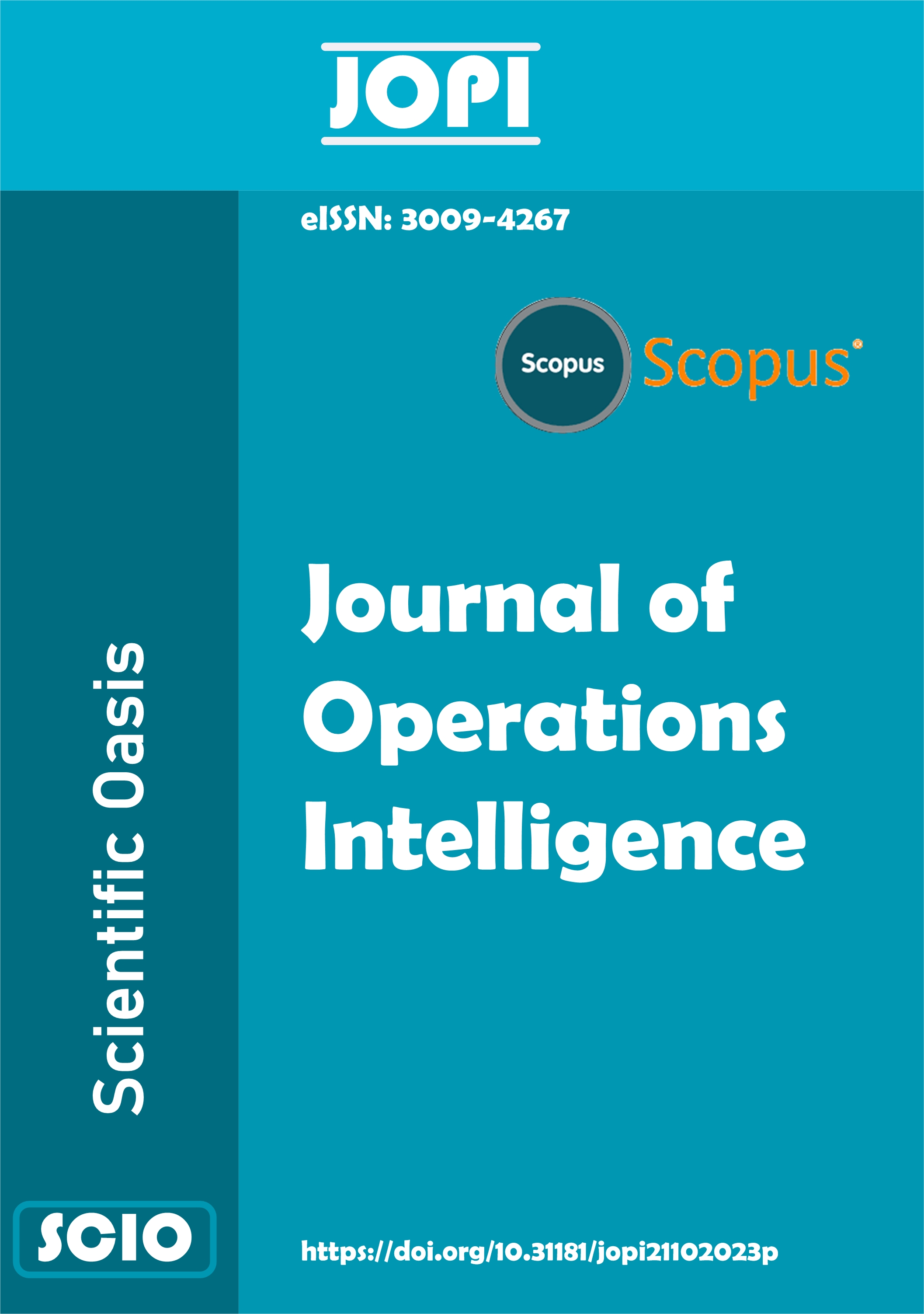Chinese Sentiment Analyses Research: A Systematic Review and Bibliometric Analysis
DOI:
https://doi.org/10.31181/jopi31202536Keywords:
Opinion mining, Opinion analysis, Chinese language, Taiwanese languageAbstract
This study aims to shed light on topics related to sentiment analysis in the Chinese language, due to the scarcity of studies in this area and its growing importance. We used a systematic, bibliometric approach for its effectiveness in analyzing the current state of sentiment analysis research in Chinese. The study identifies three main stages based on the analysis of previous research in this field. In the first stage, we examine the challenges faced by researchers in analyzing sentiment in Chinese, including the lack of access to a comprehensive lexicon. In the second stage, we discuss the motives underlying the growing importance and potential impact of sentiment analysis in Chinese. Finally, we make recommendations to guide future research in this field to improve the accuracy and reliability of sentiment analysis tools for Chinese.
Downloads
References
Zhang, W., et al. (2022). CNN-LSTM neural network model for fine-grained negative emotion computing in emergencies. Alexandria Engineering Journal, 61(9), 6755-6767. https://doi.org/10.1016/j.aej.2021.12.018
Peng, H., Cambria, E., & Hussain, A. (2017). A review of sentiment analysis research in Chinese language. Cognitive Computation, 9(4), 423-435. https://doi.org/10.1007/s12559-017-9470-8
Hao, J.-X., et al. (2020). Introducing news media sentiment analytics to residents' attitudes research. Journal of Travel Research, 59(8), 1353-1369. https://doi.org/10.1177/0047287519884657
Wen, Z., et al. (2022). Sememe knowledge and auxiliary information enhanced approach for sarcasm detection. Information Processing & Management, 59(3), 102883. https://doi.org/10.1016/j.ipm.2022.102883
Wang, G., et al. (2019). Studies on a multidimensional public opinion network model and its topic detection algorithm. Information Processing & Management, 56(3), 584-608. https://doi.org/10.1016/j.ipm.2019.02.005
Zhang, W., et al. (2021). Predicting stock market volatility based on textual sentiment: A nonlinear analysis. Journal of Forecasting, 40(8), 1479-1500. https://doi.org/10.1002/for.2777
Jiang, Z., et al. (2022). Investor sentiment and machine learning: Predicting the price of China's crude oil futures market. Energy, 247, 123471. https://doi.org/10.1016/j.energy.2022.123471
Wei, G., Cai, W., & Qin, L. (2016). Research on product feature extraction for Chinese reviews. In 2016 International Conference on Logistics, Informatics and Service Sciences (LISS). IEEE. https://doi.org/10.1109/LISS.2016.7854478
Zhang, Y., et al. (2020). Sentiment analysis of sina Weibo users under the impact of super typhoon lekima using natural language processing tools: A multi-tags case study. Procedia Computer Science, 174, 478-490. https://doi.org/10.1016/j.procs.2020.06.114
Tubishat, M., Idris, N., & Abushariah, M.A. (2018). Implicit aspect extraction in sentiment analysis: Review, taxonomy, opportunities, and open challenges. Information Processing & Management, 54(4), 545-563. https://doi.org/10.1016/j.ipm.2018.03.002
Ruan, Q., et al. (2020). A new investor sentiment indicator (ISI) based on artificial intelligence: A powerful return predictor in China. Economic Modelling, 88, 47-58. https://doi.org/10.1016/j.econmod.2019.09.010
Li, D., et al. (2020). HEMOS: A novel deep learning-based fine-grained humor detecting method for sentiment analysis of social media. Information Processing & Management, 57(6), 102290. https://doi.org/10.1016/j.ipm.2020.102290
Zhu, S., et al. (2009). Research on feature extraction from Chinese text for opinion mining. In 2009 International Conference on Asian Language Processing. IEEE. https://doi.org/10.1109/IALP.2009.53
Zhu, X., et al. (2022). Leveraging bilingual-view parallel translation for code-switched emotion detection with adversarial dual-channel encoder. Knowledge-Based Systems, 235, 107436. https://doi.org/10.1016/j.knosys.2021.107436
Peng, H., et al. (2021). Phonetic-enriched text representation for Chinese sentiment analysis with reinforcement learning. Information Fusion, 70, 88-99. https://doi.org/10.1016/j.inffus.2020.12.004
Xu, D., et al. (2020). Deep learning based emotion analysis of microblog texts. Information Fusion, 64, 1-11. https://doi.org/10.1016/j.inffus.2020.06.007
Alamoodi, A.H., et al. (2021). Sentiment analysis and its applications in fighting COVID-19 and infectious diseases: A systematic review. Expert Systems with Applications, 167, 114155. https://doi.org/10.1016/j.eswa.2020.114155
Xu, Q.A., Chang, V., & Jayne, C. (2022). A systematic review of social media-based sentiment analysis: Emerging trends and challenges. Decision Analytics Journal, 3, 100073. https://doi.org/10.1016/j.dajour.2022.100073
Xiao, Y., et al. (2022). Towards Lean Automation: Fine-Grained sentiment analysis for customer value identification. Computers & Industrial Engineering, 169, 108186. https://doi.org/10.1016/j.cie.2022.108186
Jia, K. (2021). Chinese sentiment classification based on Word2vec and vector arithmetic in human-robot conversation. Computers and Electrical Engineering, 95, 107423. https://doi.org/10.1016/j.compeleceng.2021.107423
Chao, A.F. & Yang, H.-L. (2018). Using Chinese radical parts for sentiment analysis and domain-dependent seed set extraction. Computer Speech & Language, 47, 194-213. https://doi.org/10.1016/j.csl.2017.07.002
Zhang, C., et al. (2009). Sentiment analysis of Chinese documents: From sentence to document level. Journal of the American Society for Information Science and Technology, 60(12), 2474-2487. https://doi.org/10.1002/asi.21206
Du, Z., et al. (2022). Language and Domain Specificity: A Chinese Financial Sentiment Dictionary. Review of Finance, 26(3), 673-719. https://doi.org/10.1093/rof/rfab034
Zhang, C., et al. (2021). Grammar guided embedding based Chinese long text sentiment classification. Concurrency and Computation: Practice and Experience, 33(21), e6439. https://doi.org/10.1002/cpe.6439
Yuntao, Z. (2021). Research on Feature Extraction and Tendency Analysis of Chinese Language Sentimental Expression in Network Context. In 2021 International Conference on Intelligent Transportation, Big Data & Smart City (ICITBS). IEEE. https://doi.org/10.1109/ICITBS53129.2021.00096
Li, J. & Ren, F. (2013). A hybrid approach for word emotion recognition. IEEJ Transactions on Electrical and Electronic Engineering, 8(6), 616-626. https://doi.org/10.1002/tee.21905
Dai, Z., Dai, W., Liu, Z., Rao, F., Chen, H., Zhang, G., ... & Liu, J. (2019, September). Multi-task multi-head attention memory network for fine-grained sentiment analysis. In CCF International Conference on Natural Language Processing and Chinese Computing (pp. 609-620). Cham: Springer International Publishing. https://doi.org/10.1007/978-3-030-32233-5_47
Downloads
Published
Issue
Section
License
Copyright (c) 2025 Shahd Al-Majali, Ibrahim Alshakhatreh (Author)

This work is licensed under a Creative Commons Attribution 4.0 International License.





















